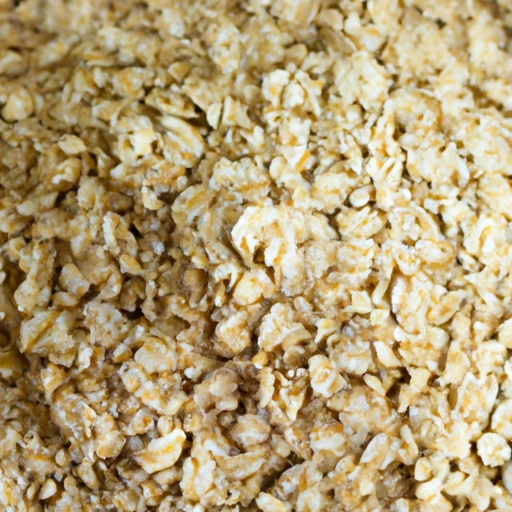Oat
Description

Oats are a cereal grain known scientifically as Avena sativa and are prized for their nutritional value and health benefits. A staple in many cultures' diets, oats are most commonly rolled or crushed to make oatmeal or ground into a fine oat flour. They can also be consumed as oat milk, a popular dairy-free milk alternative. Oats are revered not only for their gastronomic versatility but also for their role in providing sustained energy and supporting overall health.
Common uses
Oats are widely used as a breakfast food, served as oatmeal or porridge. They are also a key ingredient in baked goods like cookies, bread, and granola bars, as well as a thickening agent in soups and stews.
Nutritional value
Calories
A 100g serving of raw oats contains approximately 389 calories (1627 kilojoules).
Protein
Oats are a good source of protein, with 100g offering around 16.9g.
Fat
Oats contain about 6.9g of fat per 100g, which includes a balance of monounsaturated, polyunsaturated, and a small amount of saturated fats.
Carbohydrates
Carbohydrates are abundant in oats, with 100g serving providing around 66.3g, out of which 10.6g is dietary fiber.
Vitamins
Oats are a source of B-vitamins, particularly B1 (thiamin) and B5 (pantothenic acid), contributing to energy metabolism and brain health.
Minerals
Oats are rich in minerals such as manganese, phosphorus, magnesium, copper, iron, zinc, and potassium.
Health benefits
Oats are celebrated for their cholesterol-lowering properties due to the presence of beta-glucan, a type of soluble fiber. Regular consumption can improve heart health, stabilize blood sugar levels, and aid in digestion. The high fiber content also assists in weight management by promoting a feeling of fullness.
Potential risks
While oats are generally safe and beneficial to consume, they may cause issues for individuals with gluten intolerance or celiac disease if the oats are contaminated with gluten from other grains during processing. It's important to choose certified gluten-free oats in these cases. Additionally, overconsumption can lead to gastrointestinal discomfort due to its high fiber content.
Common recipes
Oats are often incorporated into breakfast dishes such as oatmeal, pancakes, and overnight oats; baked goods such as cookies, muffins, and scones; and healthy snacks such as granola and energy bars.
Cooking methods
Oats can be boiled, baked, or blended. Rolled oats are commonly prepared by boiling them in water or milk to make oatmeal, while oat flour is used in baking. Additionally, oats can be soaked in liquid to make overnight oats or blended into smoothies.
Pairing with other ingredients
Oats pair well with a variety of flavors including fresh fruits, nuts, honey, cinnamon, and chocolate. They also complement savory dishes when used as a binder in recipes like meatloaf or as a base for veggie burgers.
Summary
Oats are a versatile and nutritious whole grain that can be enjoyed in a multitude of dishes. From sweet breakfast porridge to hearty meatloaf, the culinary potential of oats is vast. Their rich nutritional profile and associated health benefits make them an excellent choice for those seeking to maintain a healthy and balanced diet.